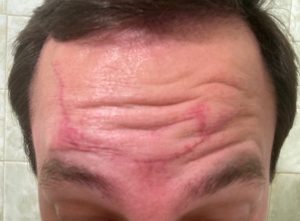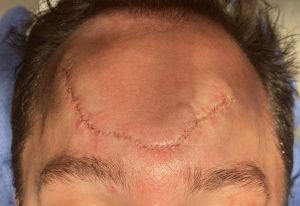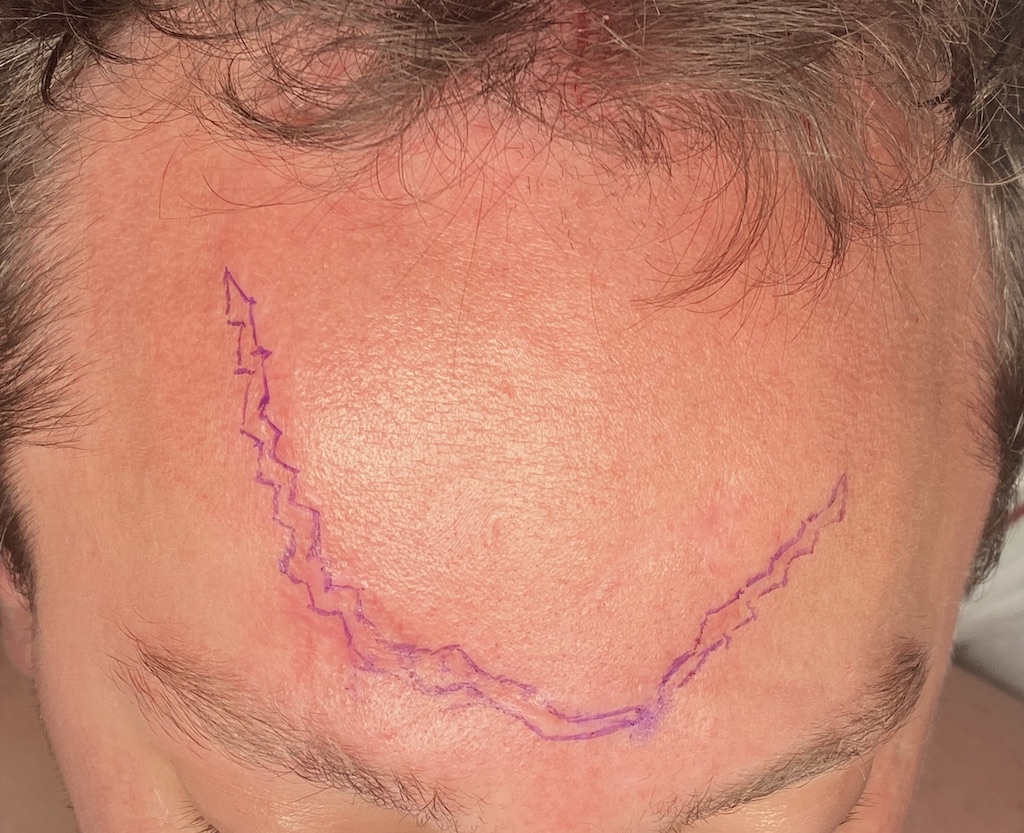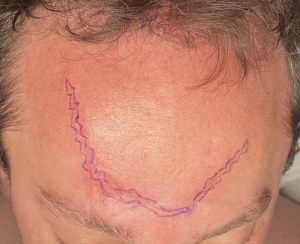Background: Scars from traumatic facial injuries are common and those that appear on the forehead are often the most visible. Besides the exposed broad surface of the forehead what makes the scars stand out are the horizontal wrinkle lines that traverse them. Initially present only during animation everyone eventually develops them at rest as well. Also known as relaxed skin tension lines (RSTL) scars that are not aligned with them in a similar horizontal orientation stand out as unnatural looking. Besides making the scar more visible it also pulls on it more than in the horizontal orientation leading to potential scar widening.
Forehead scars can be successfully treated to look better using various scar revision techniques. To better orient the scar to the forehead RSTLs a geometric scar revision technique is needed. This differs from the broken line scar revision technique as there is a more regular geometry to the line of excision. Like the broken line closure it creates an irregular scar line but that is more coincidental to the effort to make some of the scar a bit more ion line with the RSTLs.



Scar revision, or more accurately called scar replacement, no matter where on the face or body it is performed is an aesthetic gamble. It is never certain that the outcome will be better than the original scar. To determine what the chance of improvement is one has to look at the scar history (origin of the scar and how was it originally closed), scar characteristics (width, surface contour, orientation to the RSTLs of the region) and what type of scar revision is being performed. In this patient given the very traumatic origin of the scar (degloving) and its very rudimentary method of closure in a rural hospital ER, improvement in its appearance with a controlled geometric scar revision technique is very likely to be an improvement. The only question is what amount of improvement which will take months to determine.
Case Highlights:
1) Forehead scars that cross the natural horizontal relaxed skin tension lines appear more visible.
2) To improve the appearance of forehead scars a geometric scar revision technique is used.
3) The most common geometric scar technique in the forehead is the stair step method which partially aligns some of the scar segments in a more horizontal direction.
Dr. Barry Eppley
World-Renowned Plastic Surgeon





